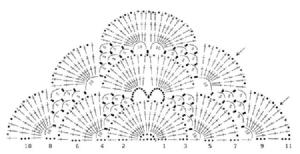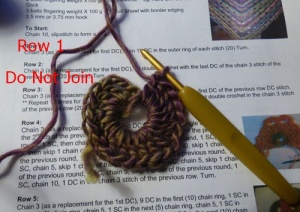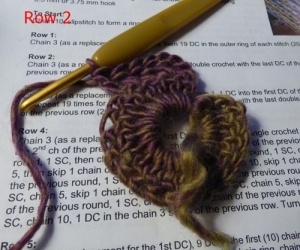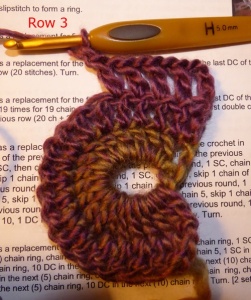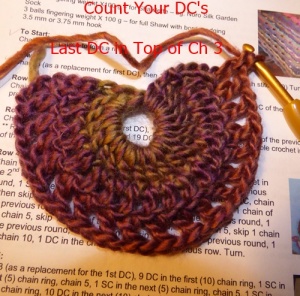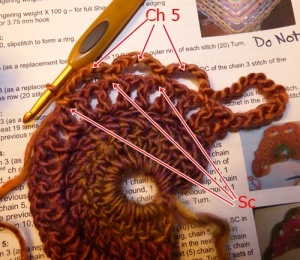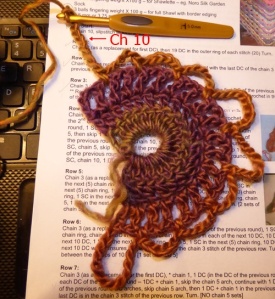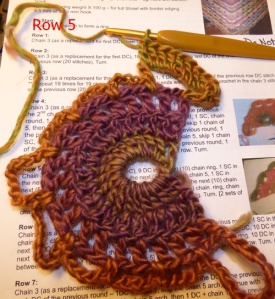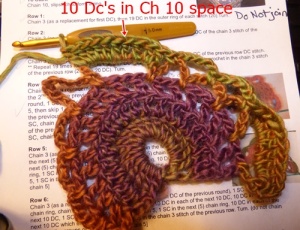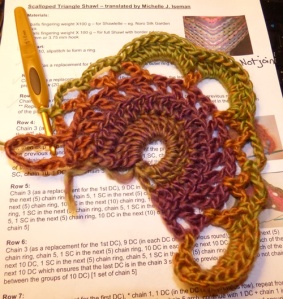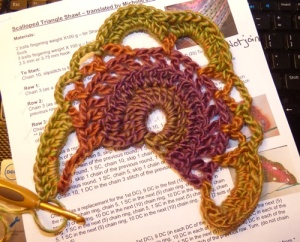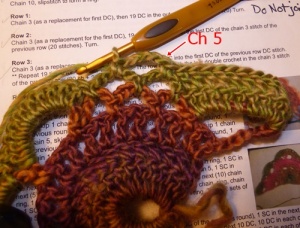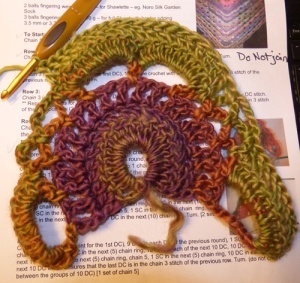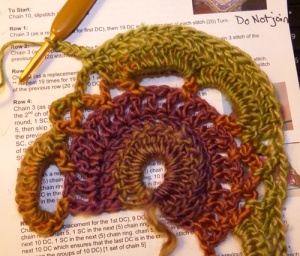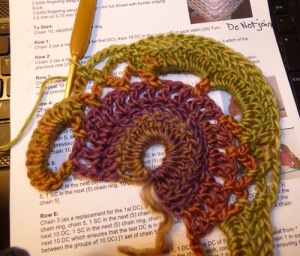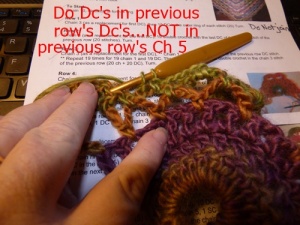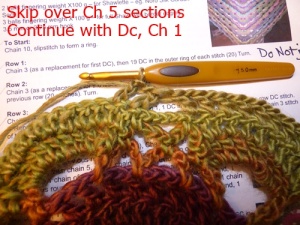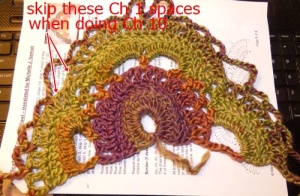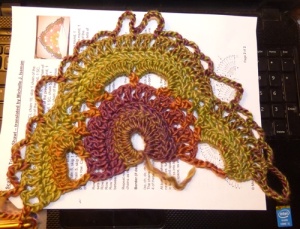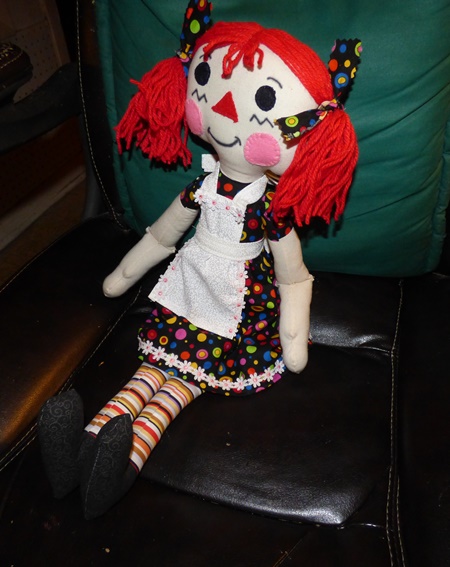I found a sweater/cardigan pattern of Celtic design that I fell in love with. It is on Ravelry, if any of you are interested.
It can be bought as a single pattern or as a book from the Knit Picks website. If you decide to by the book, spend the extra money and have a hard copy sent to you. If you opt for the e-file, it is 65 pages long and will use up all of your ink. So it will be cheaper to have a hard copy sent to you.
Here are my notes (so far) from my Ravelry page that I have made regarding the Cable Panel Chart:
I believe the Cable Pattern Chart legend needs a little more clarification. The symbol for the purl stitches should read: “purl on right side, knit on wrong side” and the symbol for the knit stitch should read: “knit on right side, purl on wrong side”.
I also used yellow marker to color in every other row to make the pattern/chart easier to follow/keep my place.
I am also using bamboo double pointed needles, 8” and one 5”. I use the 5” bamboo dpn as a cable needle. I find it works better than regular cable needles.
Just thought I would add this: Rows 22, 23 and 24 on the Cable Panel Chart are supposed to be the same as Rows 6, 7 and 8. So I added in those red circles where a black dot should be. See Photo.
The 4th photo shows what I keep handy when I am working on the cable chart. From left to right: a notepad with the rows 1-30 written down. I write hash marks by each row as I finish it. The chart with a ruler placed under the current row I am working on. The legend to be able to quickly refer to what a particular symbol means and the correction sheet to be used as I come to those areas where corrections have been made.
I had to write row 5 down because every time I came to it, I had to stop and think which direction I wanted the cables to go. So here it is for any of you who just want to knit the row without having to think about it every time you knit it.
Row 5: P3, 2/1 LPC, 2/2 RPC, P1, 2/2 LPC, 2/1 RPC, P3
Well I keep trying to add the link to my Ravelry page and a link to the pattern page and for some reason it just won’t stick. So if you want the pattern, go to either Ravelry or Knit Picks and look up Dealla Cardigan or Celtic Journey, respectively.
3/27/16 I am working on the sleeves. Then I will do the front band. After that, all I will have left is to sew it together and weave in all loose ends.
Here are some pics from the designer:
Here is where I am so far:




